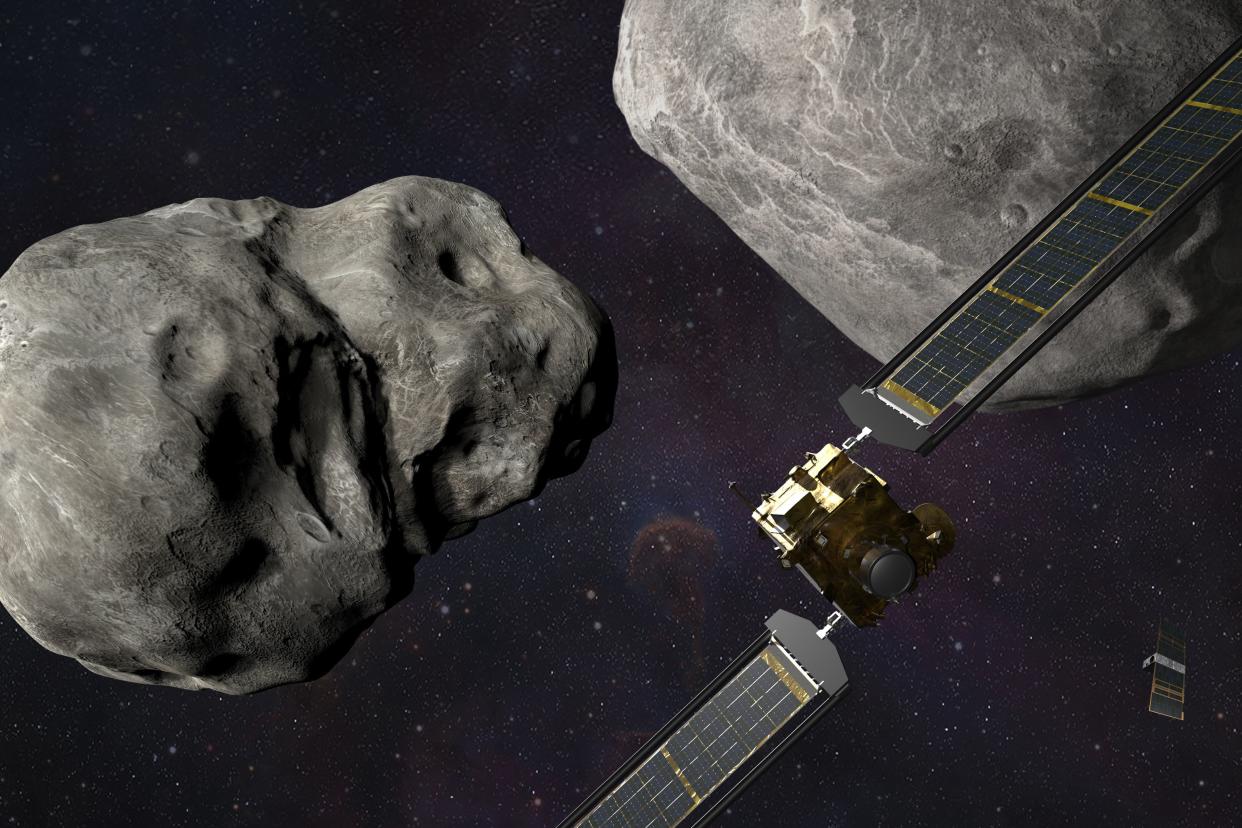NASA’s Dart mission slams into asteroid as scheduled; orbit changes will take weeks to determine
NASA’s Dart mission ship successfully slammed into the tiny asteroid Dimorphos at 7:14 p.m. Monday, leading to cheers and cries of joy at mission control.
“We have impact!” Mission Control’s Elena Adams said, jumping in jubilation.
It will take days or weeks to detect any changes in the orbit of the asteroid, which was chosen as the guinea pig in Earth’s defense plan from rogue rocks.
The spectacle was witnessed worldwide via numerous telescopes aimed at the 15,000 mph impact point 6.8 million miles away, as well as being livestreamed.
Adams and other ground controllers in Laurel, Ma., watched with bated breath as Dimorphos, seen in images beamed back to Earth every second, appeared bigger on screen. The last image beamed back froze as radio transmission also ended.
Flight controllers were seen on livestream hugging and exchanging high-fives with each other.

This illustration made available by Johns Hopkins APL and NASA depicts NASA's DART probe, foreground right, and Italian Space Agency's (ASI) LICIACube, bottom right, at the Didymos system before impact with the asteroid Dimorphos, left. DART is expected to zero in on the asteroid Monday, Sept. 26, 2022, intent on slamming it head-on at 14,000 mph. (Steve Gribben/)
It’s part of a $325 million mission, a relatively small investment given the havoc and damages that could be unleashed if an actual asteroid were to strike Earth.
“No, this is not a movie plot,” NASA Administrator Bill Nelson tweeted earlier in the day, with a pre-recorded video. “We’ve all seen it on movies like ‘Armageddon,’ but the real-life stakes are high.”
It’s humankind’s first attempt to shift a naturally occurring space object. Dimorphos, a 525-foot, 11 billion-pound hunk of boulder, is a mini-moon consisting of material discarded by Didymos, an asteroid that’s five times bigger and whirls super fast. The mission’s goal is to divert the asteroid’s orbit around its parent by 10 minutes.
“The dinosaurs didn’t have a space program to help them know what was coming, but we do,” NASA senior climate adviser Katherine Calvin told AP. A mega asteroid that hit 66 million years ago is thought to have rendered the dinosaurs extinct.
While no asteroids have been spotted that could be a threat to Earth, the possibility exists, and scientists want to be prepared. The successful impact had scientists crowing.
“We’re embarking on a new era of humankind, an era in which we potentially have the capability to protect ourselves from something like a dangerous hazardous asteroid impact,” said Lori Glaze, director of NASA’s planetary science division, in a statement. “What an amazing thing. We’ve never had that capability before.”
With News Wire Services
